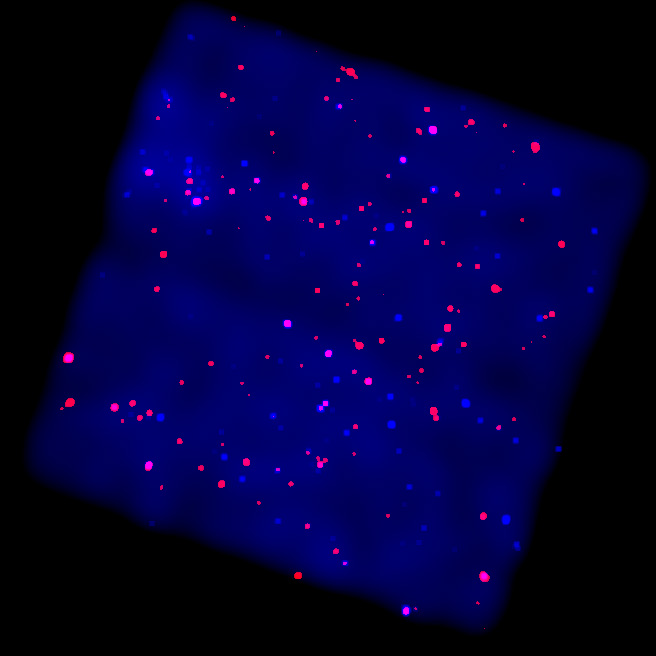
 Credit: NASA/GSFC/K. Ebisawa et al.
Credit: NASA/GSFC/K. Ebisawa et al.
In the Zone of Avoidance
Astronomers making a map of the
distribution of galaxies on the sky noticed a peculiar thing - there
seemed to be a narrow band on the sky in which very few galaxies were
found. This band was named the "zone of avoidance" since galaxies seemed to
avoid this region of the sky. We realize that this zone of avoidance is
produced by the large clouds of gas and dust in the Milky Way. Since the
Milky Way is a spiral galaxy, most of the gas and dust lies along the plane
of the Milky Way, and thus these clouds block out light from distant
galaxies if they happen to lie in the band of the Milky Way. But high
energy X-rays can penetrate through large amounts of gas and dust, giving
astronomers the chance to finally see what lies in the zone of avoidance.
The image above is the first image of the high-energy X-ray emission from a
region of the zone of avoidance in the constellation of Scutum. This
image, obtained by astronomers using the Chandra X-ray observatory, is
color-coded to show the energy of the emitted X-rays. The pink and red
objects are objects which produce relatively low-energy emission and are
probably nearby stars in the Milky Way, while the blue objects emit
high-energy X-rays and are probably distant galaxies. Astronomers also see
a "blue glow" produced by high-temperature clouds of gas in the Milky Way.
This hot gas (at temperatures of many millions of degrees) probably was
produced by ancient supernovae in the Milky Way.
Last Week *
HEA Dictionary * Archive
* Search HEAPOW
* Education
Each week the HEASARC
brings you new, exciting and beautiful images from X-ray and Gamma ray
astronomy. Check back each week and be sure to check out the HEAPOW archive!
Page Author: Dr. Michael F.
Corcoran
Last modified December 10, 2001


